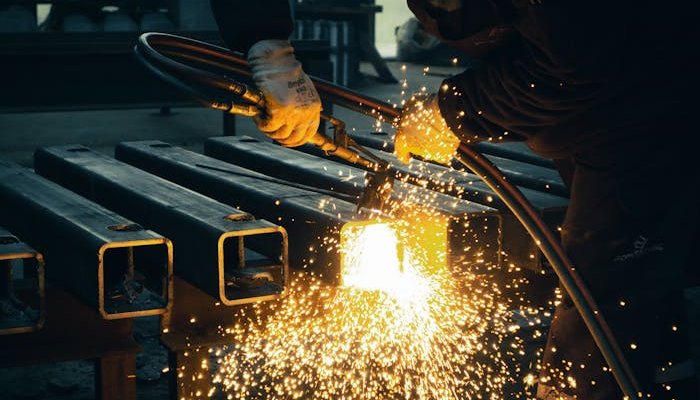The steel industry’s journey, from its modest origins to becoming the cornerstone of modern industry, showcases a narrative of continuous innovation and technological progress.
This blog post explores the transformation of steel supply, emphasizing pivotal advancements that have redefined the sector and its significance within the broader steel industry landscape.

The Early Days: Forging Iron
Steel has been a crucial material for human civilization since ancient times. While the exact origin of steel is unknown, it is believed to have first emerged in the Middle East around 4,000 years ago. At that time, iron was only available in small quantities and was difficult to extract from its ores. Hence, it was a precious material primarily used for weapons, tools, and decorative items.
The process of making steel was also very rudimentary in the early days. It involved heating iron ore with charcoal and then manually hammering and folding it to remove impurities and increase strength. This method of forging iron was time-consuming, labor-intensive, and produced inconsistent results.
The Dawn of Steel Making
The story of steel traces back to ancient civilizations, where the fusion of iron and carbon birthed a material surpassing iron alone. This breakthrough signified a pivotal advancement in steel’s evolution. Yet, this method was laborious with limited output. Not until the Industrial Revolution did steel production undergo a true revolution. Innovations like the Bessemer process revolutionized steel manufacturing, enhancing efficiency and cost-effectiveness.
The Age of Modern Steel Supply
During the 20th century, the steel supply chain saw significant changes through the introduction of new alloys and manufacturing techniques like electric arc furnaces and continuous casting. These advancements not only enhanced the quality and durability of steel but also expanded its range of applications, leading to its widespread adoption in construction, automotive, and manufacturing sectors.
Steel Supply
The state’s abundant natural resources, coupled with its strategic position, have positioned it as a prime center for the steel industry. Steel suppliers have harnessed cutting-edge technologies to boost their manufacturing capacities, guaranteeing a steady and top-notch steel supply to cater to the needs of diverse sectors, ranging from construction to energy.
Sustainability and Steel: The Next Frontier
With the global spotlight shifting towards sustainability, the steel industry faces mounting pressure to shrink its environmental impact. Innovations like electric arc furnaces, capable of recycling scrap steel with reduced energy consumption, are gaining traction. Steel suppliers are at the forefront of embracing eco-friendly initiatives, delving into the integration of renewable energy sources in manufacturing, and refining supply chain logistics to cut down on carbon emissions.
The Impact on Local Economies and Beyond
The transformation of steel supply has significantly influenced local economies, especially in areas like Utah. This industry has generated a multitude of employment opportunities, spanning from mining and manufacturing to logistics and marketing. Moreover, it has catalyzed the expansion of interconnected fields like transportation and building, fostering the holistic economic advancement of the region.
The Future of Steel Supply
Moving forward, the steel industry is set for continued innovation. Research is concentrated on developing stronger, lighter alloys, enhancing production efficiency, and promoting sustainability. With a strong culture of innovation and a robust industrial infrastructure, the industry is poised to maintain a pivotal role in the evolving steel supply landscape.
Conclusion
The transformation of steel from a precious commodity to the cornerstone of modern infrastructure stands as a tribute to human creativity and the unwavering quest for progress. The steel supply industry, deeply rooted in history, continues to progress, fueled by technological advancements and a growing focus on sustainability. This ongoing transformation not only mirrors the dynamic essence of the sector but also highlights the pivotal role steel plays in shaping our world.

